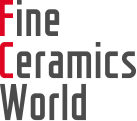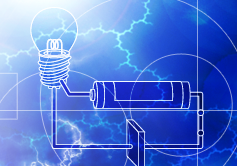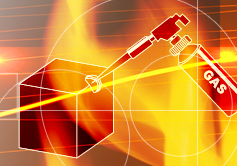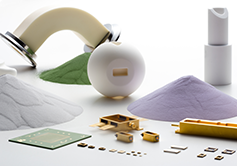Fine Ceramics, sometimes referred to as "advanced ceramics," are engineered materials that support the development of cutting-edge technology.
Light
Optical Properties
Multicrystalline Fine Ceramics (also known as "advanced ceramics") possess a microstructure of crystal grain boundaries and microscopic pores which diffuses light and makes it difficult to pass through.
In contrast, single-crystal sapphire contains no grain boundaries or pores, making it as clear as glass. It also exhibits far superior strength and thermal conductivity than glass. As a result, single-crystal sapphire is an excellent material for making windows for high power LCD projectors, among other things.
Additionally, semiconductive and dielectric crystals are employed in products that make use of the tonal and refractive changes in light which result from interactions between crystals and magnetic fields.
Applications: Windows for high power LCD projectors, fluorescent lights, light sensors and other related products.
Description
Optical Properties
Fine Ceramics are sintered materials consisting of microscopic crystal particles separated by boundary elements. Fine Ceramics can be made translucent by minimizing pores and boundary elements after sintering, and by increasing crystal size in order to reduce boundary interfaces.
In addition, some varieties of Fine Ceramic crystals have semiconductive, ferrodielectric and ferromagnetic properties. These exhibit changes in fluorescence, phosphorescence, color tone and birefringence due to interactions with light and electric / magnetic fields.
- Translucency
- The property that allows a material to transmit light. It is observed primarily among single-crystal materials. Sintered materials of high density and purity with low levels of birefringence, and grain boundaries with low levels of light scattering are most likely to exhibit translucency.
- Fluorescence / Phosphorescence
- Properties that involve absorbing radiated light and emanating light of different wavelengths.
- Electro-optic effect
- An effect that involves changes in the resistance value of a material in response to an electric field.
- Acousto-optic effect
- A light diffraction effect based on periodic refractive changes produced by acoustic waves.
- Magneto-optical effect
- An effect involving changes in a material's refractive index and light-absorption coefficient corresponding to the strength of a magnetic field (also known as the Faraday effect).
- Photochromic effect
- An effect that involves changes in color tone resulting from acquired light.
- Laser excitation effect
- An effect that involves generating powerful lasers as a result of resonance.
The term "Fine Ceramics" is interchangeable with "advanced ceramics," "technical ceramics" and "engineered ceramics." Use varies by region and industry.
People who read this page also read.
If you want to use ceramics in business, click here.
Kyocera's Fine Ceramics products (All websites below open in a separate window.)
Product Category
 Semiconductor / LCD Processing Equipment
Semiconductor / LCD Processing Equipment
 Life / Culture / Industrial Machines
Life / Culture / Industrial Machines
 Wireless Communications
Wireless Communications
 Computer Peripherals
Computer Peripherals
 Environmental Preservation / Renewable Energy
Environmental Preservation / Renewable Energy
 Medical Equipment / Devices
Medical Equipment / Devices
 Single-Crystal Sapphire Products
Single-Crystal Sapphire Products
 Metallized / Vacuum Components
Metallized / Vacuum Components
 Electronics Industry
Electronics Industry
 Heaters
Heaters
 Piezoelectric Ceramics
Piezoelectric Ceramics
Search by Material
 Alumina
Alumina
 Silicon Nitride
Silicon Nitride
 Silicon Carbide
Silicon Carbide
 Sapphire
Sapphire
 Zirconia
Zirconia
 Cordierite
Cordierite
 Yttria
Yttria
 Aluminum Nitride
Aluminum Nitride
 Cermet
Cermet
 Mullite
Mullite
 Steatite
Steatite
 Forsterite
Forsterite
Search by Property/Characteristic


- Thermal Properties
- Coefficient of Thermal Expansion
- Thermal Conductivity
- Heat Shock Resistance

- Electrical Properties
- Insulation / Semiconductivity

- Chemical Properties
- Chemical Resistance











